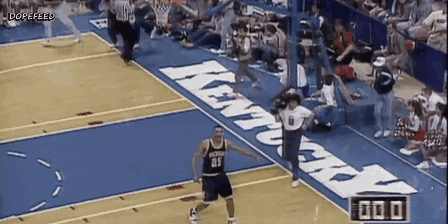For decades college basketball was ruled by dynasties—perennial powerhouses like Duke, UNC, and the University of Kentucky. The one-and-done era made college basketball significantly more unstable, but for its first several years, it still produced an odd kind of consistency. Teams like UK, which became a revolving door for top NBA prospects, were good year-over-year because they built their programs around the logic of one-and-done. Every year, there would be teams made up of future NBA stars who were doing their time in the unpaid NCAA trenches, and those teams would often be dominant.
But there are no truly dominant teams this year. LSU, the team with the consensus number one draft pick, Ben Simmons, didn’t even make the tournament. Top five teams have been losing all season. Oregon is a number one seed and the two best players in Oregon history are Aaron Brooks and Luke Ridnour!
NCAA parity has come as a result of a long, slow decline. As the NBA has adopted a loose, fluid style based on ball movement and precision shooting, the NCAA has gotten slower and more physical—the pace is turgid and offenses are anemic. That shouldn’t change this March, but that doesn’t mean that the tournament won’t be fantastic. A good March Madness means one thing: upsets. This year, we should see a lot of them.
